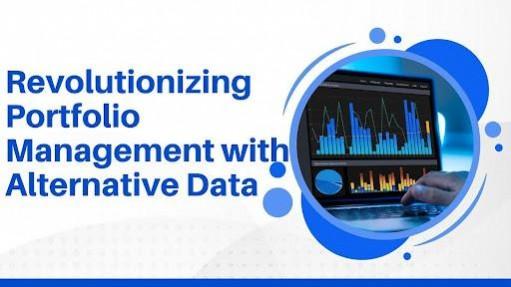
In this Digital Era a technical expert like Aniket Gharpure, along with his co-author, explores the groundbreaking transformation taking place in portfolio management with the integration of alternative data sources. With traditional financial data no longer offering a competitive edge, this shift to unconventional datasets such as satellite imagery, social media sentiment, and web traffic is reshaping investment strategies across the financial landscape.
The Rise of Alternative Data
The surge in alternative data sources represents a major evolution in portfolio management, enabling investment professionals to gain an edge in increasingly efficient markets. Data from sources like satellite imagery, social media analysis, and geolocation data allows portfolio managers to obtain real-time insights into market behavior, consumer trends, and corporate performance. As he highlights, the value of alternative data is growing, with its market expanding from $1.64 billion in 2018 to an estimated $4.33 billion in 2023. This rapid growth shows the increasing importance of alternative data, particularly in sectors such as quantitative hedge funds, where firms have experienced significant performance gains by leveraging these insights.
Understanding the Data Landscape
Unlike conventional financial data, which provides quarterly snapshots of a company's performance, alternative data offers real-time intelligence that anticipates market movements. By tapping into datasets from satellite imagery or credit card transactions, portfolio managers can gain early warnings of shifts in consumer behavior and corporate activities. For example, satellite imagery enables the tracking of oil storage facilities, and social media sentiment analysis provides a glimpse into public perception before it impacts stock prices. This real-time access helps managers make informed decisions much earlier than traditional reports would allow.
Power of Machine Learning in Analyzing Alternative Data
The intersection of alternative data and machine learning has been one of the most promising developments in portfolio management. Algorithms are now capable of processing large, unstructured datasets to uncover hidden correlations and patterns that traditional analysis might overlook. This has led to the rise of sophisticated quantitative investing strategies that can adapt and react to market changes with greater precision.
Challenges in Alternative Data Integration
Despite its promise, the integration of alternative data comes with challenges. One of the primary hurdles is data quality and reliability. Not all alternative data is accurate or consistent, and firms must carefully assess its validity before incorporating it into their investment processes. Issues like inconsistent data collection methods or selection biases can undermine the usefulness of these datasets. Another significant challenge lies in the high costs associated with acquiring alternative data and the specialized talent required to analyze it effectively. These barriers can limit access to smaller firms, though leading organizations have already made substantial investments to overcome these obstacles.
Looking Ahead: The Future of Alternative Data
The role of alternative data in portfolio management is set to expand even further. As computational power increases and new data sources emerge, the integration of alternative data will continue to reshape the investment landscape. In the future, the ability to analyze diverse and unconventional datasets will become a critical component of competitive positioning for asset managers. Organizations that effectively leverage alternative data will not only gain a performance edge but will also be better equipped to navigate the complexities of modern financial markets.
In conclusion,Incorporating alternative data into portfolio management is no longer just a strategic advantage; it is becoming an essential capability for staying competitive. As investment firms continue to integrate these non-traditional datasets into their decision-making processes, they will unlock new opportunities and gain a clearer picture of the ever-changing market dynamics. The research by Aniket Gharpure illustrates the transformative potential of alternative data in portfolio management, pushing the boundaries of traditional investment analysis and shaping the future of finance.




![Limited edition Phone (3a) launched in India; what's special about it [read now] Limited edition Phone (3a) launched in India; what's special about it [read now]](https://data1.ibtimes.co.in/en/full/825642/limited-edition-phone-3a-launched-india-whats-special-about-it-read-now.png?w=220&h=135&l=50&t=40)











![Limited edition Phone (3a) launched in India; what's special about it [read now]](https://data1.ibtimes.co.in/en/full/825642/limited-edition-phone-3a-launched-india-whats-special-about-it-read-now.png?w=220&h=135)
